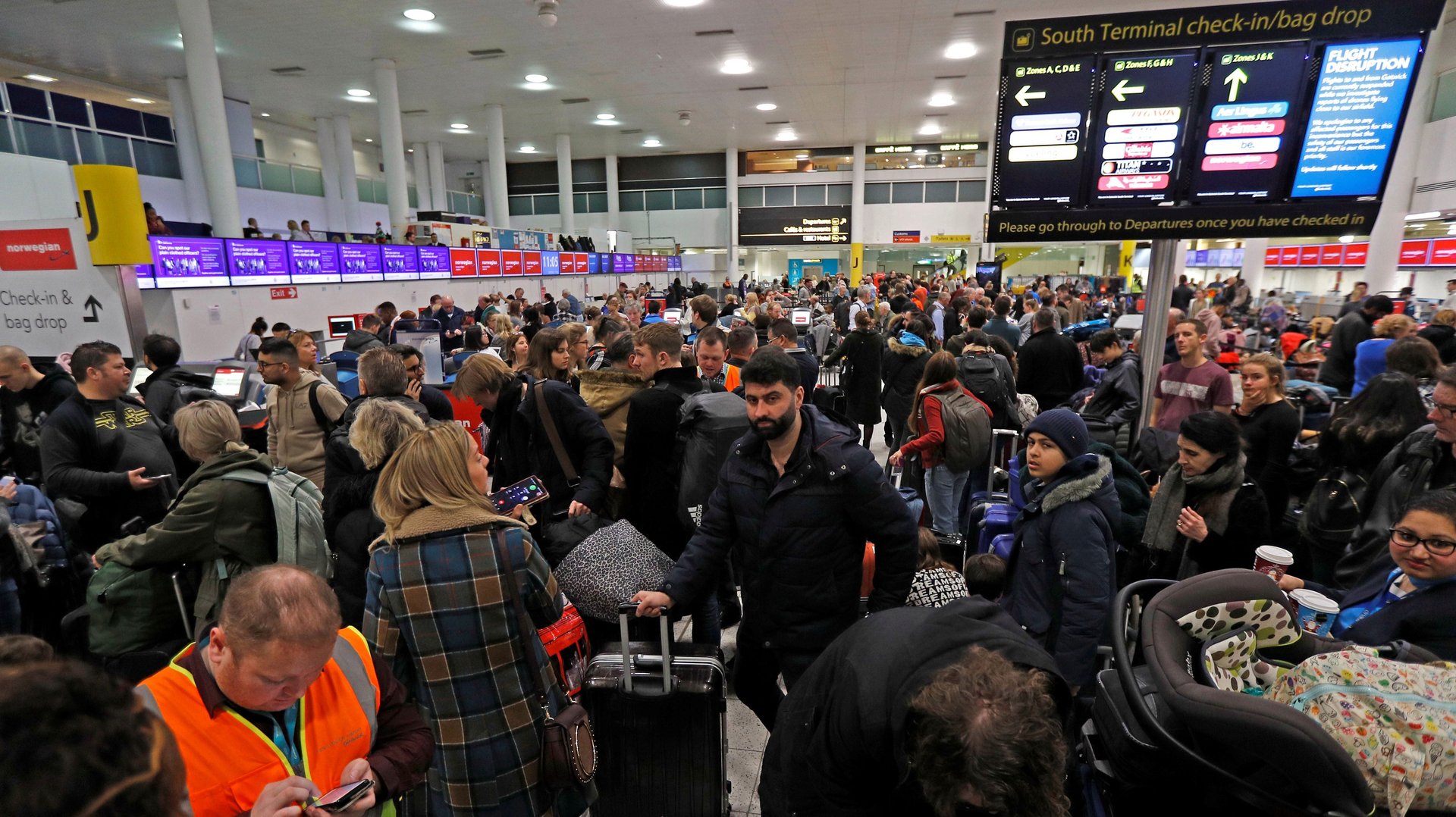Rogue drones have shut down London’s Gatwick airport, stranding thousands of travelers
If everything were running smoothly, some 49,472 passengers would be flying into Gatwick Airport today (Dec. 20), while an additional 65,592 would be leaving. But everything is not running smoothly. Instead, following reports of drones flying over the airfield, the airport has grounded all flights (paywall)—in the middle of one of the busiest travel periods of the year.


If everything were running smoothly, some 49,472 passengers would be flying into Gatwick Airport today (Dec. 20), while an additional 65,592 would be leaving. But everything is not running smoothly. Instead, following reports of drones flying over the airfield, the airport has grounded all flights (paywall)—in the middle of one of the busiest travel periods of the year.
Gatwick is the UK’s second-busiest airport. Other airports have had to pick up the strain, with planes diverted throughout the UK and Europe, to Heathrow, Luton, Liverpool, Birmingham, Manchester, Cardiff, Glasgow, Paris, and Amsterdam.
Quartz reporter Rosie Spinks is currently waiting at Gatwick’s South Terminal for a Norwegian Air flight that was supposed to depart at midday and is currently delayed until 7pm, pending the airport reopening. It’s chaos, but not quite anarchy. Somewhere between 500 and 1,000 people are queuing to re-book flights (it’s what Brits do best.) Every chair is occupied, while savvy nappers are making the most of unclaimed floor space. Even though no one really knows what’s going on, mob rule hasn’t yet set in, and the Nero Express remains reassuringly unlooted.
The drones at the root of all of this were first spotted last night (Dec. 19), shortly after 9pm; then again at 3:45am; later in the morning; and at midday today. “I cannot tell you what time we will reopen,” Gatwick’s chief operating officer Chris Woodroffe told the BBC. “I am not prepared to reopen the airport until it is safe to do so.” It is, however, considering shooting the drones down so that passengers can get airborne again, he said.
It’s not the worst time of year that this could have happened. While there’s a slight uptick in travel around the holiday period, reaching a peak on the Saturday before Christmas, December isn’t even in the top three months for the airport, which are all in late summer.
Still, at least 10,000 people last night had their flights disrupted, with some passengers rerouted to airports such as Liverpool, more than 200 miles (320 km) north-east of London, and forced to take Ubers home. Passengers are advised to “first check the status of their flights” before making moves toward the airport—lest they spend the rest of the day head-in-hands waiting for something (anything!) to happen with the drones.
What happens if a drone hits a plane?
Happily, there aren’t too many field cases of drone-plane collisions to draw from. In the US, it’s illegal to fly drones anywhere near aircraft (though people occasionally do.) In test conditions, however, drones have caused serious damage to planes. University of Dayton scientists flew a 2.1lb (1kg) DJI Phantom 4 drone into the wing of an airplane, traveling at 238 miles per hour. In the blink of an eye—three-hundredths of a second—the drone had smashed into the plane’s wing, tearing it asunder “like a spoon through chocolate mousse.” If it had gone soaring into the front windscreen, or even into the engine, it would have done still more damage.
Precisely who’s responsible for this particular mischief isn’t yet clear, though some 20 police units are out hunting for the drones’ pilots. Increasingly, British police have been forced to divert resources to new forensic intelligence forces dedicated to tackling drone-related crimes. How quickly they can find the culprits here remains to be seen—though thousands of passengers are waiting with baited breath.